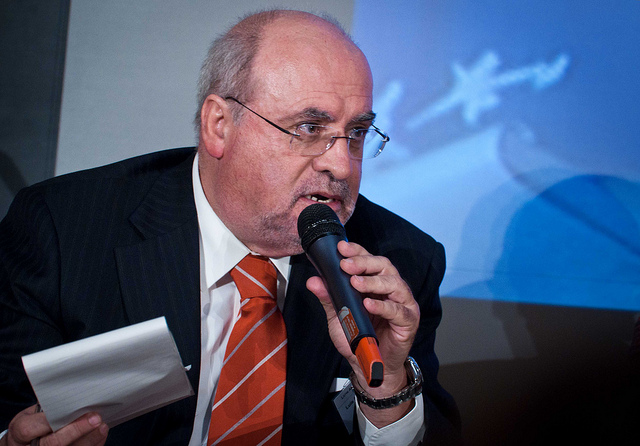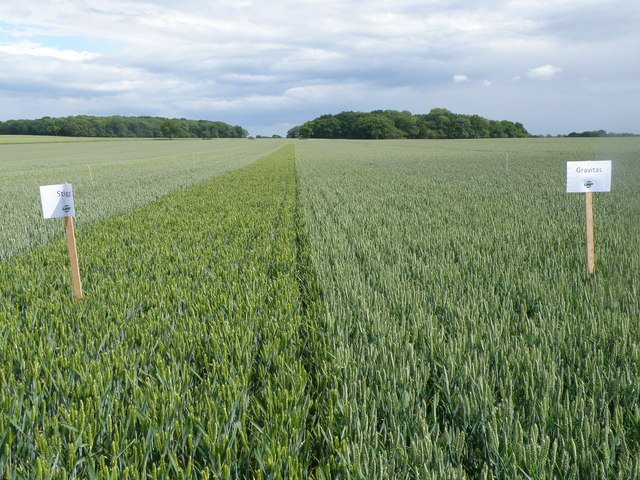The Danish Presidency has submitted its report to the Agricultural Council on the progress achieved during the first half of 2012 on CAP reform. The report indicates the main amendments suggested by the Presidency to the Commission proposals and on which the Presidency has noted broad support from delegations. The overview report contains a list of working documents in the Annex prepared by the Commission which provide further explanations of its proposals.
In addition to the overview report which notes the positions taken in the Council on the various elements of the Commission’s proposals, the report is accompanied by a series of revised draft regulations which include the specific amendments proposed by the Presidency.… Read the rest
COMAGRI draft report on rural development
As noted in a previous post, the draft reports by the COMAGRI rapporteurs on the four main CAP regulations were published last week. They include the reports on the future of direct payments and support for rural development by Mr Luis Manuel Capoulas Santos, the report on the single common market organisation by Mr Michel Dantin, and the report on the common provisions for financing, management and monitoring of the CAP by Mr Giovanni La Via. This post summarises the main changes proposed in the Capoulas Santos draft report on support for rural development after 2013.
Investments in physical assets.… Read the rest
London Olympics opening ceremony chimes with greening vision for the CAP
The dazzling opening ceremony of the 2008 Beijing Olympics was a triumph of discipline, choreography, stagecraft. London will host the games later this summer and it was announced today that the 2012 opening ceremony will take an altogether different, gentler approach. The 2012 Olympics will open with a pastoral representation of the countryside comprising a mixed farm with over a hundred real live farm animals, a flower meadow, rivers, streams, cricket and thatched cottages. In short, the British countryside as it was before intensive agriculture and the common agricultural policy came along.
The organisers of the London Olympics seem very much in line with the European Commission’s thinking on the future of the CAP: agricultural intensification has gone too far, we need to start repairing the damage done to the countryside.… Read the rest
COMAGRI draft report on direct payments regulation
The draft reports by the COMAGRI rapporteurs on the four main CAP regulations were published last week. They include reports on the future of direct payments and support for rural development by Mr Luis Manuel Capoulas Santos, the report on the single common market organisation by Mr Michel Dantin, and the report on the common provisions for financing, management and monitoring of the CAP by Mr Giovanni La Via.
In addition, a number of the other EP committees have prepared draft opinions on the proposals – see the Environment Committee here, but also the Development Committee, the Budget Committee and the Regional Development Committee.… Read the rest
How the EU market looks to food exporters
In a recent post I looked at estimates of the overall level of protection to EU agriculture and how they compare to other countries. However, the EU trade regime is highly discriminatory. Different countries face different tariff regimes depending on the nature of any trade agreements they have with the EU or the preferential trade regime from which they benefit.
The average applied tariffs calculated in the MAcMap global tariff database I discussed in the previous post take account of these preferential tariffs. However, the published report only presents the overall EU average tariff. In this post, I make use of data from the WTO World Tariff Profiles to examine differences in the market access tariff barriers faced by different groups of exporting countries to the EU.… Read the rest
More thoughts on the European Innovation Partnership for Agriculture
One of the more widely-welcomed elements of the Commission’s legislative proposals for the CAP post 2013 was a greater emphasis on promoting innovation. In an earlier post in January, I discussed the three main components of this strategic emphasis, namely:
• Continued Pillar 2 support for investment in physical assets and farm extension services.
• A new European Innovation Partnership instrument for agricultural productivity and sustainability (EIP-A) also in the Rural Development Pillar.
• Increased funding amounting to €4.5 billion for agricultural and food research under the Commission’s Horizon 2020 research programme for research and innovation on food security, the bio-economy, and sustainable agriculture.… Read the rest
Will the right tariff average stand up?
How heavily protected is EU agriculture by import tariffs? How does EU agricultural protection compare with other countries? To answer these apparently simple questions requires a huge amount of spadework, and we will see that there are different answers which can all lay claim to be ‘correct’. Fortunately, a joint team at the Centre d’Etudes Prospectives et d’ Informations Internationales (CEPII) in Paris and the International Trade Centre (ITC) in Geneva undertakes this necessary legwork and publishes their results every three years as the MAcMap-HS6 (Market Access Maps) global tariff database. MAcMap Version 3 covering tariff data for the year 2007 has just been published.… Read the rest
Macroeconomic conditionality and rural development funding
The European Commission has proposed to extend the principle of macroeconomic conditionality which currently exists for the Cohesion Fund to all the ‘CSF’ funds in the next MFF period. The CSF funds are those covered by the Common Strategic Framework and include the EAFRD rural development fund as well as the regional, social, cohesion and fisheries funds. The basic idea is that commitments agreed for a member state under its Partnership Contract could be suspended if a member state is not compliant with its macroeconomic guidelines. As the Commission explains:
… Read the restThe draft Regulation seeks to establish a much closer linkage between EU cohesion policy and economic governance, on the grounds that sound economic policies are essential to ensure that CSF Funds are spent effectively.
The political economy of eliminating sugar quotas in 2015
The Commission’s legislative proposals for the CAP after 2013 published in October 2011 include no proposal to continue the sugar production quota regime. An intense struggle is underway between EU sugar producers who want an extension to the quota regime and sugar users who support the Commission’s proposal. We review the political debate in this post.
Opponents of sugar quota elimination
The European Committee of Sugar Manufacturers (CEFS) (here and updated here) accepts that quotas will end in the long term, but supports the continuation of the quota system until 2020 rather than 2015. It argues that the EU sugar industry has actively engaged and invested to further improve its competitiveness and efficiency since the 2006 reform of the sugar CMO.… Read the rest
Where stand the MFF negotiations on the CAP?
This post reviews the state of play regarding the MFF (multi-annual financial framework) negotiations in relation to the CAP budget and review of the CAP regulations post-2013.
The MFF negotiations take place in the General Affairs Council (GAC) attended by member states’ European Ministers or Secretaries of State on the basis of a ‘negotiating box’ paper drawn up by the Danish Presidency. This paper outlines the main elements and options for the MFF negotiations. It is updated as the negotiations move forward, and forms the basis for an agreement of the European Council. Once an agreement is reached, its content feeds into the legislative work on the different acts.… Read the rest








